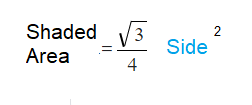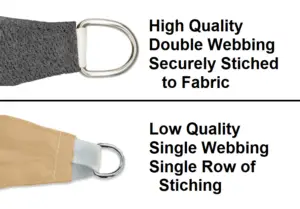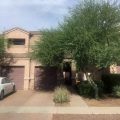Last Updated:June 28, 2025
Sail Shades — Complete Beginner’s Guide

Sail shades are a great way to cover up your pool, patio or backyard. They’re versatile and can be used as a temporary cover for any outdoor spaces that you want to use during the day but don’t have time or money to put up permanent structures. Here’s what you need to know about how they work and why sail shades may be the answer for your outdoor space!
If you are a homeowner that already has a sail shade and looking for tips for maintenance, we have a guide for that here.
Why sail shades are a great way to cover up your pool, patio or backyard ?
I use my sail shade for outdoor spaces that I only really need to cover up during the day. I live in a college town and can’t put anything permanent up because of all the students coming over at night. If you want the benefits of having an outdoor space covered but don’t want to permanently change whatever it is, sail shades are perfect!
The best thing about using sail shades is that they are temporary. They can be removed when you move out or easily taken down for a large storm. Plus, so long as the sun isn’t shining straight on them, they’re pretty cool to be under considering it’s hot out!
Sail Shades are a cost efficient alternative to awnings or pergolas
Sail shades are a cost efficient alternative to awnings or pergolas. They don’t require as much maintenance as a permanent structure and can be easily taken down or moved out of the way if need be.
If you want the benefits of having an outdoor space covered but don’t have enough money to put up a permanent structure, sail shades can be a great alternative. They’re simple and easy to set up and won’t cost as much as more permanent structures.
The entry model sail shades can cost around $50 for the fabric and another $20 for the hardware kit that you’ll use for the connections. We recommend purchasing the fabric specifically designed to be a sail shade because the grommets will be reinforced to handle the load.
Tarps can be used to create an ad hoc sail shade for camping, but we don’t recommend them for anything that needs to stay up for more than a couple of days.
What’s the difference between a sun shade and sail shade?
Sail shades are simply a large piece of fabric that have holes in each corner. The holes are reinforced with metal grommets so that they don’t rip. The distinction between the two words is minimal and on this site we use them interchangeably especially in a post geared towards beginners.
How do sail shades work?
Sail shades are simply a large piece of fabric that have holes in each corner. The holes are reinforced with metal grommets so that they don’t rip. The large pieces of cloth are then affixed above an area that you want to shade.
Residential sail shades are most commonly used attached to the fascia of the home. Normally 2 corners of the shade will be connected to the home so a triangular shade will need one external support whereas a rectangular one would need 2 supports.
Since the poles that are used for the external support are often more expensive than the shade and connectors, it’s most cost efficient to opt for a large triangular shade rather than a smaller rectangular one.
How to calculate the shaded area for a rectangular sail shade
It’s very simple to calculate the shaded area for a rectangular sail shade. You simply multiple the length by the width, and this will give you the area under the cloth. Remember the sun isn’t always overhead so depending on the angle of the sun, you may still have some parts of your patio uncovered.
For this reason, we recommend getting a sail shade about 20% larger than the size of your patio if you want full coverage.
How to calculate the shaded area for a triangular sail shade
It’s a little more complicated to know the shaded area for a triangular shade sail. The fabric is normally an equilateral triangle and the formula is.

For comparison, a 14 x 14 x 14 triangular sail shade will cover 84 square feet whereas a 8′ x 10′ rectangular shade will cover 80 square feet.
What to consider when choosing a sail shade
When selecting a sail shade, there are a few things to consider. Make sure that the material is suited for outdoor usage and is heavy duty. I’ve seen people use a cheap $5 PVC tarp from Walmart as a sail shade. These are notorious for ripping with the slightest bit of wind. They don’t stand up to the elements well, and should only be used for camping.
Fabric weight is measured as “Grams per Square Meter” or GSM, and I won’t use anything less than 150 for a sail shade. I prefer a higher weight of at least 180. The thicker fabric is more resistant to tearing, and it will greatly increase the life span of the shade.
The other primary factor in determining the quality is the connection point between the shade and the home. These will either be grommets for the very low end shades or a D ring that is attached via a strap.
When looking at the D ring pay special attention to the quality of the stitching between the larger shade and the metal D ring.
The image below is a great example of the quality difference. The top image is from a shade that will last for many years possibly even more than a decade. It has double webbing to more evenly spread out the force. Additionally, it is over stitched to create a very secure bond.

The lower image is taken from a low cost shade. You will notice the webbing that connects to the D ring is only single thickness and more narrow. This means the force generated from the wind is spread over a much smaller area making it far more likely to tear. Also because it’s only a single layer, once it starts tearing it will quickly rip all the way through.
Another easy to see quality difference is the stitching to the webbing. The lower image has a single row of stitching which puts will center the load. This makes it far more likely for the webbing to tear around that area.
The upper image has more than a 100x as many threads connecting to the webbing to the sail shade fabric. I purposefully chose these two images because the illustrate the vast difference in quality..
Even though I have been a bit harsh on the lower image, this is still a much better option than choosing one that simply has grommets. The grommet won’t spread the pulling force around at all. If it is up on a windy day, there is a very high chance that the grommet will just tear the fabric pulling it away from the connectors.
What do you look for in a sail shade pole?
Unlike awnings, sail shades have no internal frame, and they need to be supported by an external source. They can be connected to a tree, the side of the home or any other load bearing structure.
Many people will need at least one sail shade pole or post, and deciding what you need can be a little intimidating. Obviously, the bigger, thicker poles will be stronger, but thicker post also increase the price. We’ve written a full guide on what to look for when buying a sail shade post.
Sail shades are very flexible and one of their major advantages is that there are so many different ways of attaching them to your home. There are so many options that we’ve created a complete guide to attaching your sail shade to your home.
I hope the linked post will answer all your questions, we spent many hours collecting all the data and it’s been updated throughout the years as more and more of our community readers have shared their experiences.
How do you install a sail shade?
Sail shades are very flexible and one of their major advantages is that there are so many different ways of attaching them to your home. There are so many options that we’ve created a complete guide to attaching your sail shade to your home.
I hope the linked post will answer all your questions, we spent many hours collecting all the data and it’s been updated throughout the years as more and more of our community readers have shared their experiences.
Why do people get sun shades?
A sun shade create a cover for your patio, pool or backyard. It protects you from the harmful UVA and UVB lights. The cover can also be used to allow you to use your patio for a BBQ in case of rain.
Another reason to add a shade is for aesthetics. They can add a nice splash of color for a patio. They also don’t require a building license or anything to be filed with the zoning board in most areas.
Another major benefit is that they can extend the lifespan of your outdoor furniture. It will both protect the furniture from the elements and block the sunlight that causes fading.
Finally, a sail shade can also be a great way to get privacy from neighbors with prying eyes.
Can you use a tarp as a sail shade?
I must admit that I didn’t originally see this as a question because I never thought about it. But since we first published this page, we’ve had this question so many times I created a complete guide on using a tarp as a sail shade.
In a nutshell, don’t use a tarp as a sail shade, and the linked post will explain the main reasons we suggest this.
What’s the best colors for a sun shade?
Overall, the color is less important in the over effectiveness. All sun shades will prevent 90%+ of the UV rays and provide shade. Also, any color will lower the ambient temperature.
Plants will see some benefits from lighter colors whereas you will see the most energy saving benefits from the darker colors. It really boils down to preference.
My ultimate advice is to pick the color you would be happy with under the assumption that the difference is negligible.
Additional Questions
That’s it for our beginner guide to sail shades. We’ve written a complete guide to sail shades a couple years ago that has more information. That post is more geared to homeowners that are looking to add a sail shade and people looking for maintenance and repair tips for it.
If you have a question that isn’t covered in either of the two posts, we’d love to here from you at either our contact form or on our twitter.



